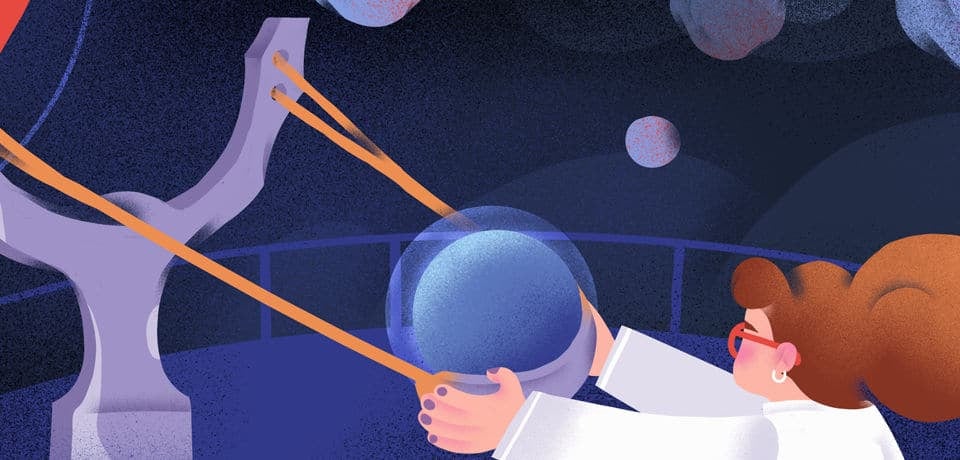22/09/2022: article corrected to show $57 million was raised across a seed and Series A round.
Despite its meteoric growth in the last twenty years, cancer immunotherapy research is hamstrung by a lack of viable drug targets. Cartography Biosciences is using a single-cell sequencing approach to meet this demand.
Immuno-oncology as a field barely existed 20 years ago, but has rapidly grown into a thriving field of biotechnology research. This has led to the development of life-saving innovations in cancer immunotherapy, such as immune checkpoint inhibitors and CAR-T cell therapy.
However, immuno-oncology is also hampered by a number of issues. For example, only a small fraction of patients with cancer — primarily those with forms of blood cancer — can benefit from approved CAR-T cell therapies. There can also be dangerous side effects associated with CAR-T therapies, such as motor disorders resulting from brain toxicity.
“We’ve had patients go into phase 1 trials and then patients die because of these toxicities,” said Kevin Parker, CEO of the California-based startup Cartography Biosciences. “It’s frustrating.”
Part of the limitation of cancer immunotherapy research is many companies choose the same drug targets that have been used for the last few decades. These targets were often found using old-school drug development methods such as classical genetics. Another factor behind the problem is that mouse models of disease aren’t good at predicting the toxicity of cancer immunotherapies, so many side effects are only detected in phase 1 testing.
Parker founded Cartography in 2020 to overcome the current obstacles to finding better drug targets in immuno-oncology. He switched focus from a successful academic career studying cancer immunotherapy to a more entrepreneurial track.
“With academia: you can either just say, ‘here’s a cool idea; someone else go do it,’ or you can actually create it,” said Parker. “For me, that was really the driving motivation; wanting to help a patient.”
Cartography is geared to smash roadblocks to finding effective drug targets. For example, many drug discovery efforts focus on hunting for target proteins in bulk genetic sequencing data from tumor samples. In contrast, Cartography sequences each cell separately, looking for patterns in RNA expression and proteomics. This lets the company ascertain whether a target protein is truly specific to tumor cells.
“People use a smoothie analogy where you have an apple, a banana and a pear,” explained Parker. “If you do single-cell sequencing, you measure the apple, banana and pear individually. With bulk sequencing, you blend it all up and measure the average across everything, which as it turns out, doesn’t actually exist anywhere. No cell has that particular composition.”
At present, Cartography is focusing its efforts on finding cancer targets on the cell surface. This means the company can suggest targets for emerging antibody and CAR-T therapies, which are limited to recognizing cancer antigens on the cell surface. According to the company, the technology can discover novel cancer drug targets in just six months, compared with the years it can take with traditional methods.
Cartography exited from stealth mode in July 2022 with the announcement of a $57 million investment raised across a seed and Series A round. The company is using the cash to expand its workforce and build out its drug discovery platform. This includes expanding the range of cancer antigens it can profile and gathering more tumor datasets. The company also plans to develop a preclinical-stage pipeline of cancer immunotherapies, both in-house and as partnered programs.
Parker said that there are many potential partners out there developing donor cell immunotherapies, engineered antibody drugs and antibody-drug conjugates.
“All of them need new targets,” he commented. “They’ve got a great chassis, but they need something to plug into it. We think a lot about working with these companies where we’re able to bring the insights, antibody binders, different targets, plug it into their chassis and then advance together to the clinic.”
One of the challenges to Cartography’s method is how to crunch all of the reams of tumor sequencing data they produce. From a single patient, the company can isolate between 10,000 and 20,000 cells for sequencing, and each cell can yield expression data for 40,000 genes. Using old-school processing methods, researchers would have to process each sample one by one. Cartography uses cloud computing to accelerate the process by analyzing many datasets in parallel.
“You need that breadth of the computational infrastructure that we now have to even load that data in and do an analysis on it,” said Parker. “It’s certainly something I think that’s been enabled by all the advances in computational processing power over the past few years.”
Cartography is part of a growing group of companies that aim to increase the number of targets available for use in immunotherapy. For example, another Californian player called 3T Biosciences was launched in August 2022 to devise targets for therapies using a type of immune protein called T-cell receptors, which can hunt for cancer targets inside cells. And in March 2022, San Francisco-based TRexBio closed a Series A round at $85 million to fund the hunt for cell therapy targets in immunological conditions.
According to Parker, Cartography is unusual in that it’s applying a very wide scope to its drug discovery efforts, while other players focus on specific disease areas. This way, they can find novel targets and make cancer immunotherapies safer than ever.
“It’s not just that the targets haven’t worked, but they’re causing problems in patients,” said Parker. “We really have to spread out the pipeline to targets that are more specific.”





